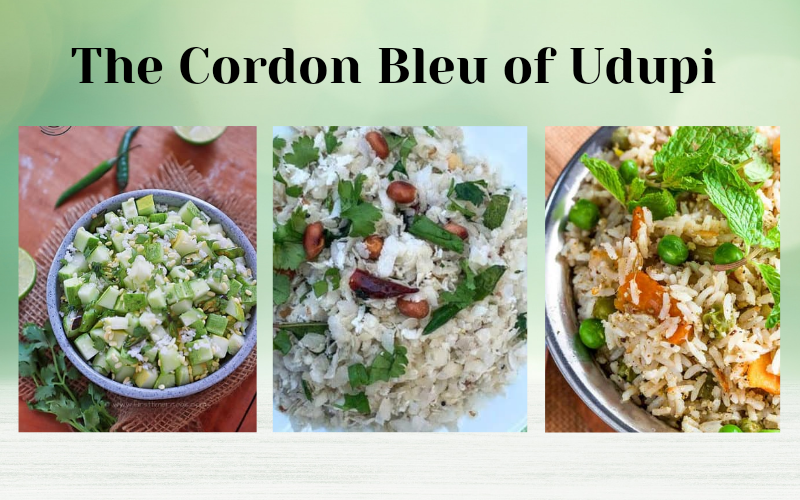
Vrata Parivaraha
During the Chaaturmasya of every year, starting from Ashada Ekadashi to Karthika Ekadashi, four kinds of Vratas are observed by the Madhwa Brahmins. They are as follows Shaka Vrata, Dadhi Vrata, Ksheera Vrata, and Dwidala Vrata. During this period certain food habits are observed. It includes avoiding few vegetables, spices and cereals. It is observed bearing some established facts in mind which includes the climatic conditions and health benefits.
Let us look into few food practices which gives us an idea about how the Vrata is observed. Butter milk is allowed to be consumed by those who practice Dadhi Vrata but curd is forbidden. Observing Ksheera Vrata prohibits the usage of milk. By observing the following restrictions, a normal day’s food habit can be practised as usual in these two kinds of Vrata.
Unlike the Dadhi and Ksheera Vrata-s, Shaka and Dwidala Vrata-s differ widely in various aspects. The food habit practised, which includes taste and smell, during Shaka and Dwidala vary completely. These two Vrata-s also forbids some pulses and vegetables as in-take.
Considerable number of Madhwa Brahmin population lives in Udupi and it is a place famous for delicious vegetarian diet choice. But by observing these Vrata-s one is restricted from enjoying the real delicacies of Udupi cuisines. These restrictions prevent us from over-indulgence and brings in a discipline which eventually helps in maintaining a good health. It is not only an individual who is benefitted from observing these Vrata-s, but it plays a vital role in preserving our tradition, culture, and heritage.
Unfortunately, this kind of Vrata style of cooking and diet pattern are slowly fading away from our memory as well as our tradition. The primary reason is the lack of culinary experts in the Vrata style of cooking, supplemented by our indulgence in western eating patterns.
In the light of modernity, the delicious junk is preferred to a native balanced diet. Still, the healthy tradition is followed by some orthodox Madhwa households.
At this point of time, we now slowly begin to retrace and relive our past, holding it in one and the modern in another. The pure modernity has taught us a lesson, indeed lessons, that it is going to take us no-where and better not spoil our health heeding to its gossips. It can be stated that what we really need is a hybridized form of ancient and modern, the former values and habits accompanied by the latter ways.
It is high time for us to research and understand the lost culinary skills, culture, and civilization.
Speciality of Vrata Preparations
The speciality of Vrata is that only a light-food diet pattern is followed which helps us to remain active all through the day. Foods which suit and nourish our body, keeping in mind the internal and the external factors like digestion, climatic conditions, are observed. Spices are usually avoided and vegetables which are easily digestible are consumed.
I. Points to remember while observing Shaka and Dwidala Vrata-s:
Words are not sufficient to describe the wisdom of our ancestors. Their ways, food habits, eco-consciousness, philosophies, architecture, games, were far more intelligent and rational. Let us dive back and find more about our ancestors’ way of live in The Verandah Club. Stay tuned with us!
Reference:
1. ‘Udipi Cuisines’ by U. B. Rajalakshmi
NEXT ARTICLE